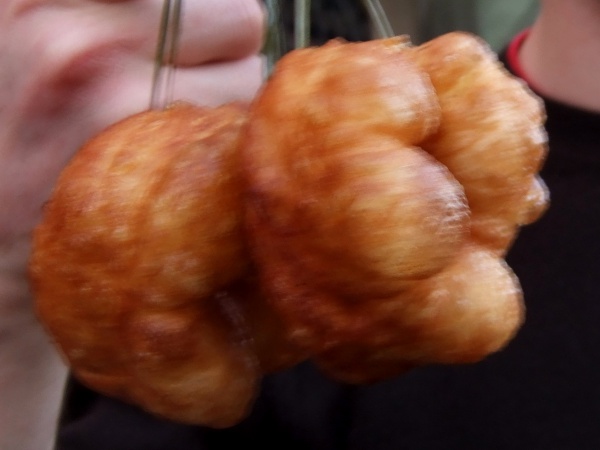Facts About Sfenj
Sfenj, a beloved traditional doughnut hailing from the Maghreb region, is cherished for its light, spongy texture and ring shape, all perfected through frying in oil. This versatile treat can be enjoyed plain, dusted with sugar, or drizzled with honey. Sfenj is a popular choice for breakfast or a late afternoon snack, often paired with tea or coffee. Depending on where you are, it may be called Khfaf in Algeria, bambalouni in Tunisia, or sfinz in Libya. Additionally, Moroccan Jews and other Sephardim in Israel savor sfenj, particularly during Hanukkah, due to its delicious deep-fried quality.
The tale of sfenj begins in Al-Andalus (Muslim Spain), where legend has it that a baker accidentally dropped some dough into hot oil, creating this delightful treat. From there, sfenj journeyed to the Maghreb and even inspired the creation of French beignets. The Amazigh (Berbers) of the Maghreb embraced sfenj, and specialized bakers known as sufnājeen became integral members of the community. Although traditional sfenj bakers are now rare due to industrialization, the treat was historically sweetened with honey or syrup long before the 18th century.
In Israel, sfenj was introduced by Maghrebian Jews before 1948 and quickly became a Hanukkah favorite. However, its popularity waned as the jelly-filled sufganiyah doughnut gained prominence, promoted by the Histadrut to support Jewish bakers. Nevertheless, sfenj boasts various adaptations, such as sfenj matifiyya and sfenj matifiyya bil-baydh, each offering a unique twist on preparation.
Sfenj's cultural significance is evident in Moroccan Arabic idioms, underscoring its role in Moroccan society. Despite the rise of industrial bakeries and evolving culinary tastes, sfenj remains a cherished dish with a rich history in the Maghreb and beyond.

 Algeria
Algeria